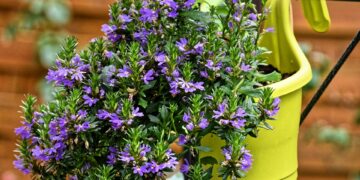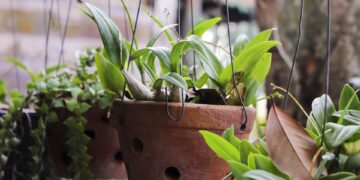Reviving Nature’s Balance: The Art of Sustainable Gardening
Introduction to Sustainable Gardening
In an age where the environment faces significant threats from various quarters—including climate change, pollution, and biodiversity loss—sustainable gardening emerges as a crucial practice. Sustainable gardening encompasses techniques that not only support individual health and well-being but also contribute to the ecological balance of our planet. This holistic approach to gardening helps in conserving resources, reducing waste, and promoting biodiversity.
Understanding the Basics of Sustainable Gardening
At its core, sustainable gardening involves practices that ensure a low impact on the earth while cultivating plants. It adapts the principles of sustainability into the gardening process, focusing on resource efficiency and natural planting techniques.
Key Aspects Include:
- Water Conservation: Utilizes rainwater harvesting and drip irrigation to minimize water use.
- Soil Health: Incorporates organic matter such as compost to enhance soil fertility naturally.
- Pest Management: Employs natural pest control methods instead of relying on chemical pesticides.
The Benefits of Sustainable Gardening
Sustainable gardening offers a multitude of benefits. It not only reduces your carbon footprint but also enhances your garden’s biodiversity, providing a habitat for local wildlife. Additionally, it promotes healthier plant growth and reduces chemical runoff into local waterways, contributing to cleaner water sources.
Notable benefits include:
- Healthier Foods: Home-grown produce is fresher, potentially richer in nutrients, and free from harmful pesticides.
- Economic Savings: Reducing dependence on purchased products and conserving water can lead to significant financial savings.
- Enhanced Biodiversity: Encourages a variety of species to thrive, which strengthens the ecological web.
How to Implement Sustainable Practices in Your Garden
Conserving Water
Water is a precious resource. Sustainable gardens focus on maximizing efficiency with practices like:
- Mulching: Reduces water evaporation from soil.
- Native Plant Selection: Chooses plants adapted to local rainfall patterns and soil conditions, reducing the need for supplementary watering.
Building Healthy Soil
Healthy soil is the foundation of any garden. To promote soil health:
- Composting: Converts kitchen scraps and yard waste into rich soil amendment, diverting waste from landfills while nourishing your garden.
- Avoiding Chemical Fertilizers: Uses natural fertilizers like compost tea or worm castings which do not pollute groundwater.
Natural Pest Control
Avoiding synthetic pesticides protects the ecosystem. Sustainable gardeners often use:
- Companion Planting: Certain plant combinations naturally repel pests.
- Biological Control: Introduces beneficial insects that prey on harmful pests.
Common Questions Answered
Q1: How do I start a sustainable garden if I have limited space?
A: Utilize container gardening, vertical gardens, and choose species that do not require extensive root space. These methods can remarkably maximize small areas.
Q2: What are some easy plants to start with for beginner gardeners?
A: Some robust and low-maintenance options include sunflowers, marigolds, tomatoes, and bell peppers. These plants generally require less care and are rewarding for beginners.
Q3: Are there any resources for sustainable gardeners?
A: Yes, numerous organizations and websites offer guides, workshops, and forums that provide tips and support for sustainable gardening. Local gardening clubs and master gardener programs can also be invaluable resources.
The Impact of Sustainable Gardening on Community and Lifestyle
Sustainable gardening goes beyond personal benefits and positively impacts communities and lifestyles. Schools and community centers that incorporate sustainable gardens not only beautify spaces but also serve as hands-on educational tools that can teach valuable lessons about the environment and sustainability.
Community Building
By engaging in community gardening activities, individuals can connect with neighbors, fostering a sense of community and cooperation.
Promoting Sustainable Living
Through active participation, gardeners inspire others, spreading the values and practices of sustainability into wider lifestyle choices—extending to waste reduction, water conservation, and consumer habits.
Conclusion
Sustainable gardening is more than just a method of planting—it’s a transformative process that nurtures the gardener, the environment, and the community. By adopting more sustainable practices, gardeners can play a crucial role in restoring nature’s balance and ensuring a healthier, more resilient world.
Further Resources
For those interested in delving deeper, consider exploring local botanical gardens, online courses on sustainable agriculture, and books specifically on sustainable gardening techniques. Every small step towards sustainable gardening contributes significantly to environmental conservation and a healthier planet.



















































